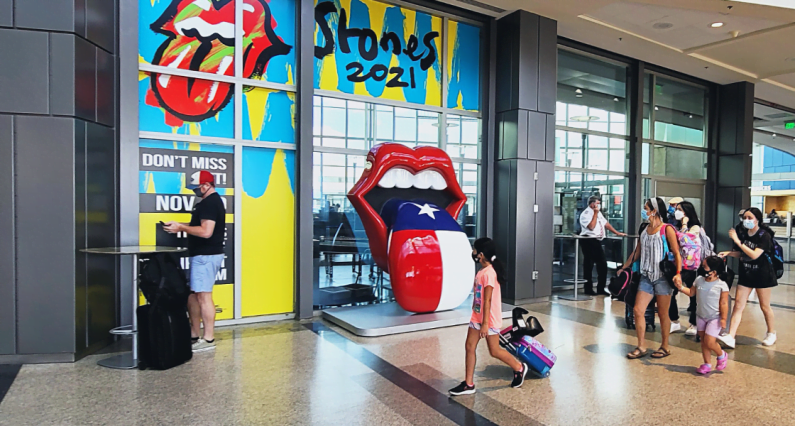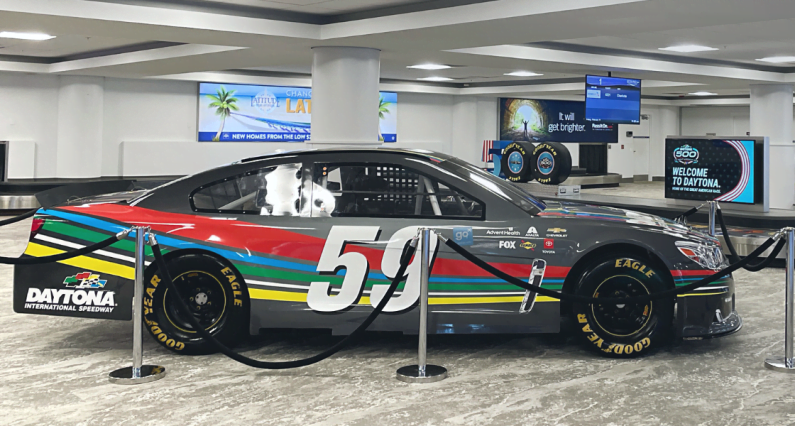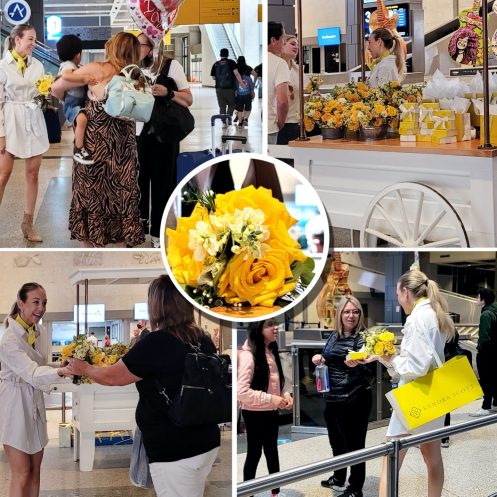Editor’s Note: Airports provide a captive audience of travelers with higher-than-average spending power and, often, a bit of extra time on their hands. Brands have long capitalized on that opportunity, often seeking a “shop window” to lure travelers. But increasingly, passengers are looking for experiences, and Clear Channel Outdoor is responding with brand immersion experiences designed to bring fun and build relationships between travelers and brands. AXN’s Carol Ward spoke with Clear Channel Senior Vice President John Moyer about some of his company’s most successful activations.
Ward: Clear Channel has been doing some interesting pop-ups and other experiences in airports in recent months. Are you seeing increased demand from airports for this type of installation?
Moyer: It’s one of the many growing channels of our pretty unique multi-channel sales approach. Brand experiences can consist of brand ownership or domination of an area as well as smaller interactive pop-up exhibits or even roaming events. They can be short-term, event focused, or long-term sponsorships. The experience can be more interactive (two-way) or passive (one way). What they have most in common is that they traditionally have custom elements and more deeply impact and/or engage the audience via the senses.
Ward: Can you share some details about some of your more successful pop-ups or similar experiences?

Moyer: Just over the past year, Proximo Tequila had with sampling and quite a large, elaborate installation at [John F. Kennedy International Airport]. At [Austin-Bergstrom International Airport] jewelry designer Kendra Scott did an incredible mothers’ day promotion. It was really shock and surprise as moms rolled into Austin baggage claim and [the company] handed out flowers and a little gift bag. Also in Austin there was a Rolling Stones “Lips” display during the Grand Prix Formula One. It was an awesome display – everyone wanted to get their photo taken with the lips. There was a crazy amount of social media activity.
The Daytona 500 is an event that people always look forward to making better. There will a bunch of cars on display at the airport and the access road in front of the airport has the finish line on it. There are logos on the floor everywhere and there are race cars on the bag belts and as they circulate around – they look like they’re racing on a track. From the social side it’s gets all kind of coverage, and people just really enjoy it as it’s such a surprise. Then we had an NFL draft [pop-up] in Cleveland, which really a combined effort between us and the airport, that had all kinds of interactive opportunities. Finally, for University of Washington we had a dimensional installation where alumni, current students, potential new students…were doing selfies and social media posts in front of the letters at Seattle-Tacoma International Airport

Ward: Passengers are engaging in lots of different things at the airport. Are there things that stand out, in terms of what really sparks interest?
Moyer: Travelers want to feel appreciated. Most airport guests leave home with an openness to experiences. There’s a definite expectation that as they are moving around they’re going to be exposed to and engage with local and national brands. This gives brands, products, airports and Clear Channel this perfect setting and opportunity to deliver on that expectation. Technology is one of the tools that a brand can use to better engage people and create an enhanced experience. But it’s not only one. Fun can be very impactful. Information that’s relevant can be very impactful. An interpersonal relationship – like the jewelry designer on Mother’s Day – can be impactful. Anything that can wow the senses and have a positive emotional impact is extremely valuable to the brand.

If an airport guest feels like a brand cares enough to do something special, to do something interesting, informative or helpful for them, they’re going to repay that brand with continued or new interest.
In such an automated world that we live in today, airports are one those unique places where [brands can achieve] a deeper interaction and impact with such a highly coveted group of consumers and decision makers, all in one place at one time.
Ward: How does the business arrangement with the airport work? Are these types of experiences falling under the advertising contract?
Moyer: Most of it fits under a broad-based advertising/sponsorship contract and the terms that govern it. But the best airports in the world of any size…understand that there’s a need for flexibility around financial terms, particularly for capital- or labor-intensive activations like these. Many airports understand that and will provide flexible terms when needed in order to get to the great experience.
At times, in order to get to something extremely special, it may be extremely costly as far as staffing or build-out for a short-term event, and [the airport] will be flexible with the terms and sign off on a one-off type of arrangement. For example, say our overriding contract for traditional media buys in our traditional inventory is 50 percent revenue share. There’s usually a [minimum annual guarantee] associated with that and that’s an overriding MAG across all the assets. There may be times where we need to go to an airport and say, in order to get to this level of experience – build-out, staffing, etc – we’re proposing to pay you 40 percent on this particular activation in order to raise the level of the experience. Will you sign off on this? The most progressive airports will fully understand that and sign off.
Ward: Do any of your pop-ups or other experiences have a charge to the passenger?
Moyer: The short answer is no. However, the objective of all brands is to acquire and/or retain customers. The objective is always a transaction at some point. With the ability to order virtually anything online, transactions as a result of the brand exposure can easily be done by the traveler when and where they want, including in the airport.
For example, Peloton had an experience where you could see the Peloton products – touch them, ride them, experience them. When you leave that display, which is a typical exhibit display that falls under the scope of airport advertising, they can go sit in gate and order… so there can be a transaction at some point, even at the airport.






